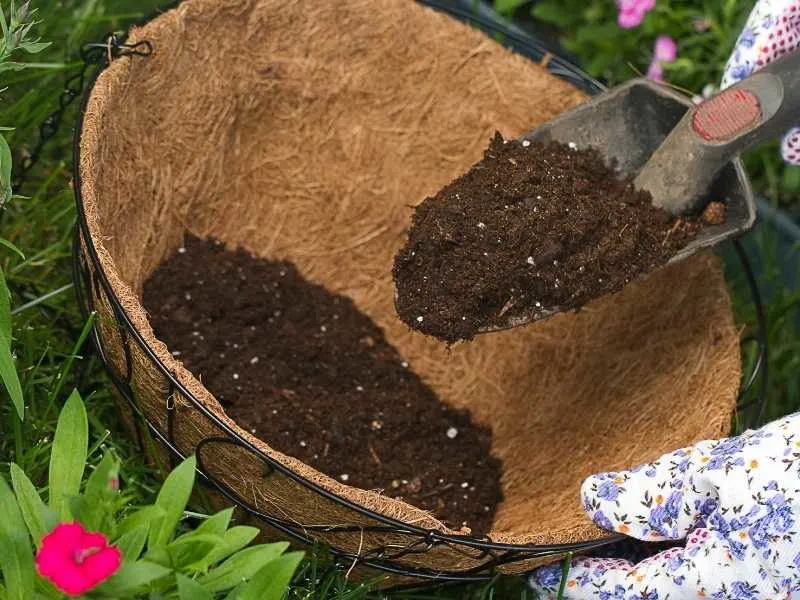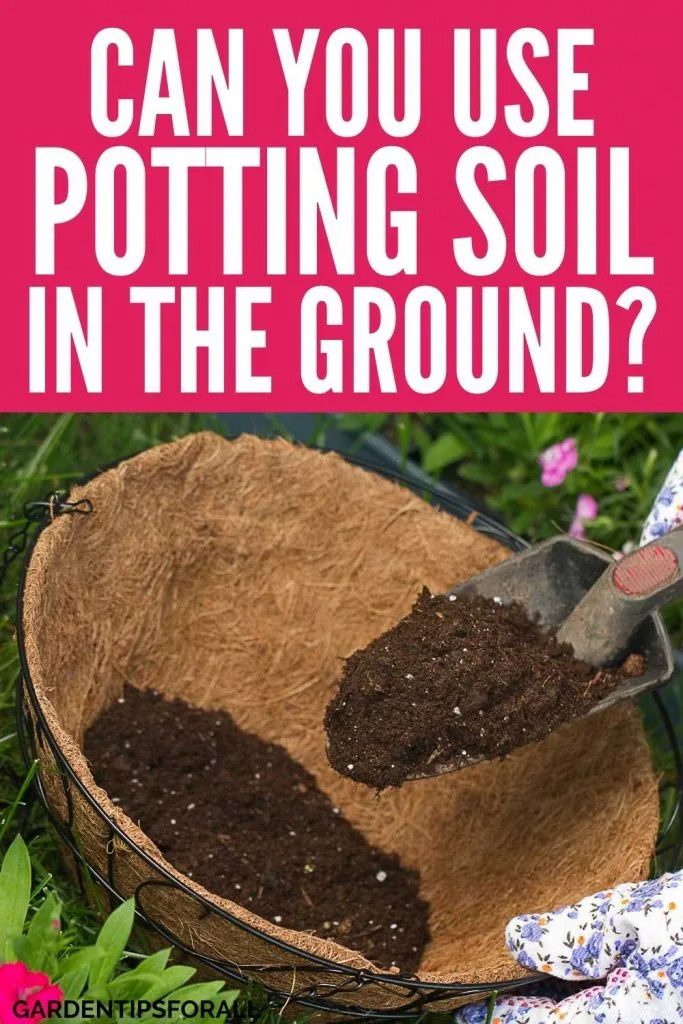Can You Use Potting Soil in the Ground?
Using potting soil in the ground seems like the right thing to do. If it works for potted plants, it should work for outdoor plants, you may argue.
This has led to a lot of people asking, can you use potting soil in the ground?
Yes, you can use potting soil in the ground, but should you? It is important to note that potting soil is specifically made for potted plants, so, it’s more suitable for growing plants in containers. Moreover, it is much more expensive than garden soil.

Related Articles:
- Can Potting Soil Go Bad?
- Can I Use in Ground Soil for a Raised Bed?
- Best Soil for Tomatoes in Pot
- Can You Use Potting Soil to Start Seeds?
- Garden Soil vs. Potting Soil – What is the Difference?
Properties of Potting Soil that Make it Good for Plants
Here are some of the properties of potting soil that are beneficial to plants.
Good Texture
The most significant difference between potting and ground soil is the texture.
Many garden soils are heavy. This is more so with clay soil, which is hard, hindering the plant roots from spreading, thus limiting plant growth.
And sandy soil doesn’t hold water for long, so your plants might suffer dehydration.
Potting soil is light in texture. There are a lot of organic elements in potting soil, which help to improve the texture of the garden soil.
Some of the components that you will find in potting soil include peat moss, perlite, composted bark and possibly some sand. The combination of these components makes the soil ideal for planting.
Sterility
This is another reason why potting soil is good for your plants. Sterilized soil is the one that has been heated or treated to kill any pathogens or bacteria that could be in the soil.
Most natural garden soils are full of pathogens, and as much as some of them are helpful, they might affect your plants in different ways, especially by spreading diseases and weeds.
Sterilization makes the soil healthy for plants to thrive. Some gardeners prefer to sterilize their garden soil by themselves (DIY).
However, that is a lot of work and time-consuming.
It is also important to note that even if you use sterilized soil, it doesn’t mean that you won’t control pests and diseases.
Sterilized soil is simply a great way to lay a proper foundation for your plants.
What Are the Limitations of Using Potting Soil in the Ground?
As much as potting soil has its benefits, it also has some disadvantages. Let’s look at some of the limitations.
Lack of Adequate Nutrients
Potting soil combines inorganic and organic elements but mostly lacks essential nutrients even though many plants thrive well in them in the open garden.
On the other hand, the garden soil is rich in almost all nutrients, thanks to the microorganisms, humus, and compost. The existence of these microorganisms plays a significant role in plant support.
These microorganisms help in breaking down organic matter. Their waste also goes a great way in enhancing the fertility of the garden soil hence making the plants thrive well.
Generally, garden soil has lots of nutrients, unlike potting soil. This, therefore, means that plants in the ground have access to more nutrients than the potted ones, resulting in more yields.
It Doesn’t Hold Moisture for Long
This is another downside of potting soil. Although it features several ingredients that help in water absorption, the soil doesn’t hold the water long.
It dries out quickly, unlike the garden soil. All this is attributed to its formula.
This is explained by its lightweight, which encourages the flow of water and air.
However, this attribute is not really helpful during the hot weather because the water evaporates quickly, hence leaving your soil without adequate moisture. This results in dehydrated plants and lower yields.
Not Ideal for Every Plant
As much as potting soil manufacturers try to make the soil ideal for all plants, their efforts have not proven fruitful.
Many plants don’t thrive well in the soil, and the reason behind the picky character of potting soil is the P.H Levels.
This is caused by peat moss, which is highly acidic. This can be harmful to plants because it might cause stunt growth, burns, or death of your plants.
It is Expensive
Potting soil is more expensive than garden soil, so it may be more cost effective for you to use topsoil for growing your plants in the garden and only use potting soil for growing plants in containers.
Frequently Asked Questions
Can You Mix Potting and Garden soil?
Yes. You can mix potting soil and garden soil because they complement each other. The garden soil has the nutrients, while the potted ones have peat moss, which helps with soil aeration.
Which is the Best Way to Use Potting Soil?
The best way to use potting soil is for growing plants in containers because it is specifically made for container plants. It has the right texture, and it improves drainage and aeration, thus providing a conducive environment for your potted plants to thrive.
Can I Use Potted Soil in the Ground? – Conclusion
Potting soil is specifically made for potted plants, which means that it is more suitable for growing plants in containers. Moreover, it is also more expensive than topsoil. So, it would be wise to use it for what it is meant for if you want to get the best results.

